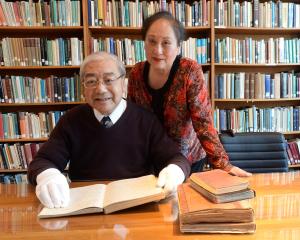My face must have registered a certain surprise for I was quickly informed that all of those present could name (and proudly so) Irish, Scots, and English ancestors.
That incident (and the laughter it generated) was brought to mind by Angela Wanhalla's interesting book, which describes the development and eventual dissolution of a mixed-descent community.
IN/VISIBLE SIGHT
The Mixed-Descent Families of Southern New Zealand
Angela Wanhalla
Bridget Williams Books, $39.99, pbk
As the author correctly notes, a great deal is now known about the interaction of Crown and Maori and the many difficulties which arose out of the urgent desire of the former to transfer as much land and associated resources as possible from Maori into settler ownership.
Rather less, as she also observes, is known about the manner in which Maori and settlers interacted. Wanhalla sets out to illuminate that wider set of relationships by examining interracial marriage, not in a North Island setting but in Otago: the community she examines is Maitapapa, more familiarly known as Henley - the renaming itself an interesting comment.
By employing a careful blend of archival, manuscript and oral sources, Wanhalla examines and reveals the complex patterns of marriage practices, kinship networks and cultural practices which constituted the social basis of Maitapapa.
Although a generally satisfying account, occasionally the author strays a little.
The material is not always ordered as well as it might be, some repetition is apparent, assertion sometimes trumps evidence and more could have been extracted from some of the evidence advanced.
Further, some apparent inconsistencies appear: thus the reader is informed at one point that since persons of mixed descent lacked the requisite language skills or cultural knowledge they were not considered authentically Maori, and because of their dual heritage they were not completely accepted as Pakeha.
Yet the reader is also informed that, between 1850 and 1940, 116 residents and former residents of Maitapapa entered into formal marriages, of whom 99 married European partners.
The reader is also informed that the integration of mixed-descent families into New Zealand cities was relatively successful in the period 1890 to 1940.
Some unresolved tension seems apparent.
Most importantly perhaps, In/visible sight reminds the reader that the history of Otago - and by extension that of New Zealand - has many layers, layers that remain to be identified and explored.
As such studies are undertaken the time will come when the general histories of both the province - and the nation - will have to be reformulated, reworked and presented afresh.
GOLDEN PROSPECTS
Chinese on the West Coast of New Zealand
Julia Bradshaw
West Coast Historical and Mechanical Society, $54.95, pbk
Among the many immigrant groups which have settled in New Zealand, the Chinese have attracted a good deal of investigation.
Jim Ng's Windows on a Chinese Past stands as the landmark study of this often maligned and frequently discriminated-against section of the New Zealand community.
While the Irish who flooded on to the West Coast have found their historian in Lyndon Fraser, now the Chinese who worked and settled in that distinctive part of New Zealand have found their historian in Julia Bradshaw.
Perhaps those other groups which made such important contributions to the gold-mining industry of not only the West Coast but also Otago and the Thames/Coromandel - not least the Cornish - will attract similar investigation.
An inspection of Bradshaw's bibliography makes it clear the author cast her investigative net widely.
While drawing upon familiar sources, she also utilised a range of unpublished - including personal and family - materials which enabled her to add depth and texture to her account.
Further, Golden Prospects presents a useful selection of photographs and clear and helpful graphs.
Most importantly, this book, while dealing with many familiar themes - among them, the discrimination, both formal and informal, inflicted upon the Chinese - serves as an eloquent record of the contribution which the Chinese made to the development of New Zealand.
While the photograph of Go-home of Reefton as an old man bent by the burden of his years may express for many the fate of those who arrived as young men to winnow the tailings left by their fellow miners, Bradshaw's account makes it clear that Chinese entered into commerce and the professions, participated in sports, served in this country's armed forces, assisted local charities, and intermarried with Europeans.
By exploring that contribution, Bradshaw also accounts for one of the many ethnic and cultural strands which collectively have gone into the making of New Zealand.
Golden Prospects was printed with the assistance of the Chinese Poll Tax Trust.
It and the West Coast Historical and Mechanical Society, which published the book, should be well-pleased with the result.
• Dr Hearn is a Dunedin historian.



